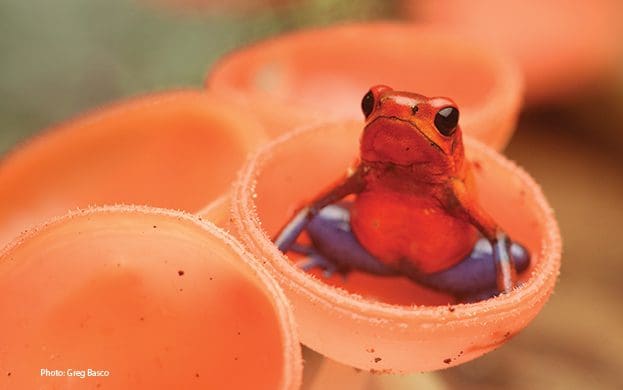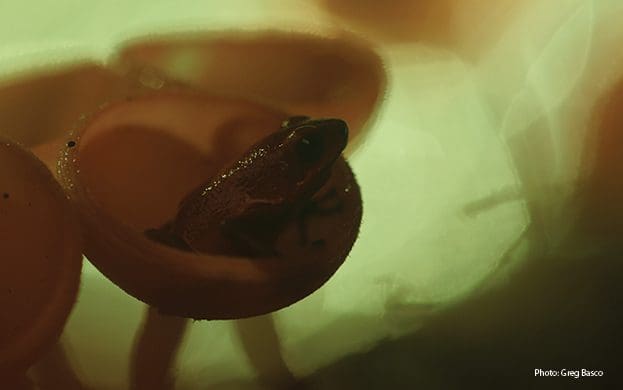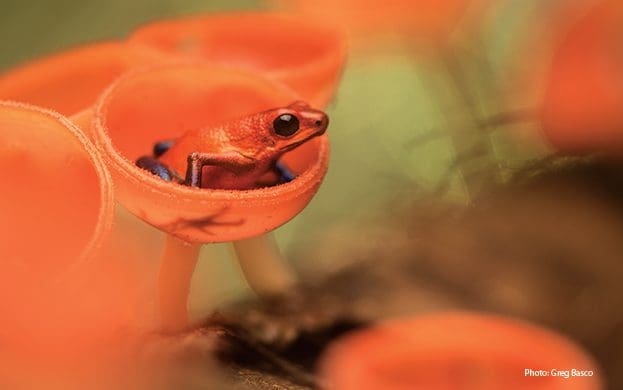
Flash in Nature Photography
Flash in Nature Photography
The scene
Flash often gets a bad reputation in nature photography. That’s unfortunate. Employed properly and responsibly, flash can look completely natural and help any photographer get the shot when the natural light is less than ideal, all without harming the subject. Indeed, flash saved the day for me with these shots of a tiny strawberry poison frog (oophaga pumilio) in a Costa Rican rain forest a few years ago.
Everything except my little frog subject
would be out of focus. Perfect!
Strawberry poison frogs are members of the poison arrow/dart frog family. They have toxins in their skin and often sport bright colors to warn predators of their toxicity (scientists call this aposematism). These frog subjects are a little over an inch long and are diurnal, spending their time on the forest floor in search of fruit flies and ants, the latter of which provide the frogs’ toxin ingredients.
Camera settings
While most macro-photographs are taken with small apertures to maximize depth of field, I wanted to do the opposite here to produce a dreamy effect. While shooting in manual mode on my camera, I selected f/4.5. Everything except my little frog subject would be out of focus. Perfect!
On a sunny day in the rain forest, dappled light is almost always the rule. In this case, the sun was hitting some green leaves just behind the frog, but the frog and the mushrooms were in relative shadow. The difference between light and dark in such a situation is too much for even the most modern pro cameras. I chose to expose my background properly. This meant that my background looked great, but the frog and mushrooms were way too dark.

Exposing the background properly under natural lighting conditions had good results for the image background, but without using flash, the frog and mushrooms were way too dark.
Landscape photographers are familiar with this type of lighting challenge (for example, bright skies and dark foregrounds at sunset on the beach) and solve it by using HDR or blending different exposures in the computer. But wildlife photographers can’t use these solutions because their subjects are moving. If I tried to combine multiple shots, my frog would likely have moved just a bit between pictures. Flash, by necessity, became the obvious answer.
I want to make the flash look natural, but flash aimed directly at a subject — be it a person or a frog — rarely looks good. That’s why I always have a small softbox and radio flash transmitters and receivers in my bag. These gadgets allowed me to move my flash off-camera and soften its light. I held the camera in my right hand and flash with my left hand. The very natural-looking result comes from getting the flash off-axis and diffusing it.
Composition
I took a number of different compositions, both horizontal and vertical. I shot each image to my liking, but also had in mind magazine covers in double-page spreads. It’s always good to envision different uses you might have for a photograph. Holding the camera with one hand and the flash with the other can make composing difficult. But supporting my camera hand with my elbow and choosing an autofocus point covering the frog’s eye, made my job a lot easier. The battery grip on my camera also allowed me to shoot much more comfortably in vertical orientation. That said, it’s very helpful to bring a friend along with you to hold the flash.
At the computer
I use Adobe Lightroom for the vast majority of my processing, and these images were no exception. A few simple tools enabled me to get the highlights and shadows just right and also to slightly adjust the colors so they look as natural as possible. This is standard practice for any photo, and processing took no more than a couple of minutes.
The lesson
Envisioning the type of photo you want to create, rather than simply shooting a subject, is what takes your photos from snapshots to artistic imagery. Flash can assist you by helping solve exposure problems in the field when natural light can’t provide what you want. Flash can be a great tool for helping realize your creative vision!


